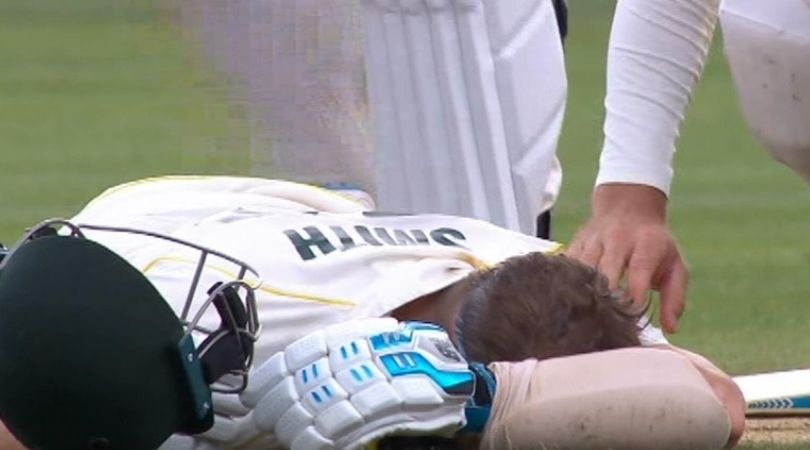What is a “Substitute” in cricket?
A “Substitute” (or replacement) is a person or thing constituting or acting in place of another. In the context of sports, a “substitute” a sports player nominated as eligible to replace another after a match has begun. A substitute in the sport of Cricket is a replacement player that the umpires allow when a player suffers injury or illness after the announcement of the players at the start of the game.
“Substitute” in Cricket: History and Overview
- The first-ever utilization of a substitute in first-class cricket occurred in The University Match between Oxford and Cambridge in 1891 when Thomas Case replaced Frederic Thesiger in the Oxford XI squad after Thesiger had injured himself while fielding during the first half of the match, i.e., in the morning.
- A substitute can take the place of an injured or ill player in the field, although they are not allowed to bowl, bat or act as captain. However, they are permitted to take catches along with any other fielder in a team but their catches do not contribute towards individual statistics.
- Substitutes are generally not mentioned in the official squad before the start of a game.
Forms of Substitution in Cricket:
Substitute Fielder
A fielding team can use a substitute fielder if one of the players in that team has been injured during the course of a match. However, substitute fielders cannot be used in specialist positions, i.e., they cannot bat, bowl or keep wickets. If the substitute fielder hangs onto a catch, it will go down as “caught sub” in the scorebook. However, a sub cannot be used if a player wants to leave the pitch to change their equipment. Once a player has left the pitch, he/she cannot come back onto the field of play without the permission of the umpire, otherwise, the umpire can deduct five runs from the fielding team.
If any player has been off the pitch for more than 15 minutes, he/she cannot bowl for at least that length of time for which they were out of the pitch. However, in case of Test matches, a player who has been absent from the field for more than 8 minutes, cannot bowl for the time they were absent. They also cannot bat for at least that amount of time for which they have been absent in the field or the start of their team’s batting innings unless their team have lost five wickets.
However, these restrictions do not apply if the player has experiences an external injury (rather than an internal injury such as a hamstring) and has been forced to leave the field during the game.
Runner
If batsmen have injured themselves during the course of the game, they can use a runner to run for them between the wickets, on their behalf. The runner should be a batsman who has already batted in that innings. The runner’s protective equipment should match exactly with what the injured player is wearing.
When the injured player is on strike, the runner must stand in square leg position and run between the wickets from there and when the injured player is not on strike, the runner must stand at the non-striker’s end. The runner is subjected to the same laws as the injured batsman, and thus they can be run out obstructing the field or handling the ball.
In June 2011, the ICC board banned the use of runners in international cricket, and this came into effect on 1st October 2011. However, runners can be used in Domestic Cricket.
Retirements
A batsman can retire at any time during their innings by informing the umpires of their reasons for retiring. Retirements usually take place in case of warm-up games played before World Cups or normal series. Batsmen retire to give their teammates batting practice and they are recorded as ‘retired – out’.
Injured Bowler
If a bowler is injured during an over and cannot complete it, another bowler has to bowl the remaining deliveries. The chosen bowler cannot be the bowler who bowled the previous over and also must not bowl the following over. A substitute fielder takes the place of an injured bowler when the latter is off the field, but he/she cannot bowl.
Tactical Substitution
In 2005, during a 10-month trial period, Tactical Substitution took the form where each team was to be allowed one substitute, who had to be named before the toss and could be introduced at any stage of the match, mainly as a fielder. However, after much criticism from players, commentators and fans, the trial was relinquished by the ICC (International Cricket Council) in March 2006.
New Form of Substitution in Cricket: Concussion Substitute
The Concussion Substitution Rule in Cricket was announced by the ICC in July 2019. According to this rule, “If a player suffers a concussion during a Test Match and becomes unfit to take further part in that match, then a “like-for-like” substitute may be allowed to play in that match”. Previously, if a player had suffered a concussion, then the substitute was allowed only for fielding. This new rule allows the substitute player to bat/bowl as well. However, there are a number of restrictions in this rule.
- If a specialist Batsman is injured in a team and if a specialist Batsman is available in the squad, he/she will be allowed substitute. However, if no specialised Batsman is available in the squad but an all-rounder is available, then the all-rounder will only be allowed to bat and not bowl.
- A specialist Bowler cannot be used as a concussion substitute for a specialist Batsman.
- The decision making a responsibility of whether a substitute is to be allowed in a match depends upon the match referee and he may choose to not allow a substitute if he feels allowing the substitute would give undue advantage to the team.
Instances of Concussion Substitution in International Cricket
- The first Concussion Substitution came into use during the Second Test at Lord’s in the 2019 Ashes Series between England and Australia when Steve Smith was stuck on the neck. Marnus Labuschagne was announced as the official replacement for Smith and came for batting on the final day of the Test Match.
- On 21st October 2019, in a Test Match between India and South Africa, Theunis de Bruyn took the place of Dean Elgar as a concussion substitute for South Africa.
- On 22nd November 2019, Mehedi Hasan and Taijul Islam took the place of Liton Das and Nayeem Hasan respectively as concussion substitutes for Bangladesh against India. There was one bowler-for-bowler replacement with Taijul Islam taking Nayeem’s place. Mehidy Hasan, a specialist spinner, replaced Liton who is a wicketkeeper-batsman. Thus, Mehidy was not allowed to bowl in the game. This was the first time that two concussion substitutes were used in the same Test match.

